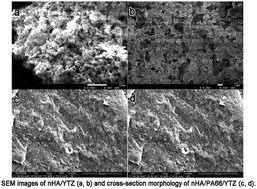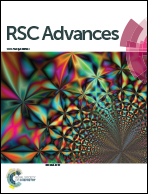In vitro evaluation of an yttria-stabilized zirconia reinforced nano-hydroxyapatite/polyamide 66 ternary biomaterial: biomechanics, biocompatibility and bioactivity
Abstract
Nano-hydroxyapatite/polyamide 66 (nHA/PA66) is a bioactive composite that is widely applied in orthopedics. However, imperfect mechanical behavior is the main drawback of the nHA/PA66 composite, and this is a limitation for further applications. Meanwhile, zirconia has been attracting increasing attention in recent years, owing to its excellent mechanical behavior and biocompatibility. A novel ternary biomaterial composed of nHA/PA66/yttria-stabilized tetragonal zirconia (YTZ) was prepared in the present research. The material was analyzed by X-ray diffraction and Fourier transform infrared spectrometry; mechanical behavior was also tested. The results of the mechanical-behavior testing showed that the mechanical behaviors of nHA/PA66/YTZ were significantly better than those of nHA/PA66. Besides, the cross-section of this biocomposite was characterized by scanning electron microscopy. Furthermore, the biocompatibility and bioactivity were evaluated in vitro using MC3T3-E1 cells. From the results of the biocompatibility and bioactivity experiments (cell counting kit-8 tests, cell immunofluorescence analysis, alizarin red S staining and western blotting), it was observed that nHA/PA66/YTZ could facilitate the biological function of MC3T3-E1 cells. The results showed that the attachment, proliferation, spreading, calcium nodule formation, and expression of osteogenic-related proteins (collagen 1, osteopontin, osteocalcin) of cells cultured with the nHA/PA66/YTZ composite were better than for control groups. The ternary biomaterial has promising mechanical properties, biocompatibility and bioactivity. Thus, it deserves more attention and is worthy of further research.


 Please wait while we load your content...
Please wait while we load your content...